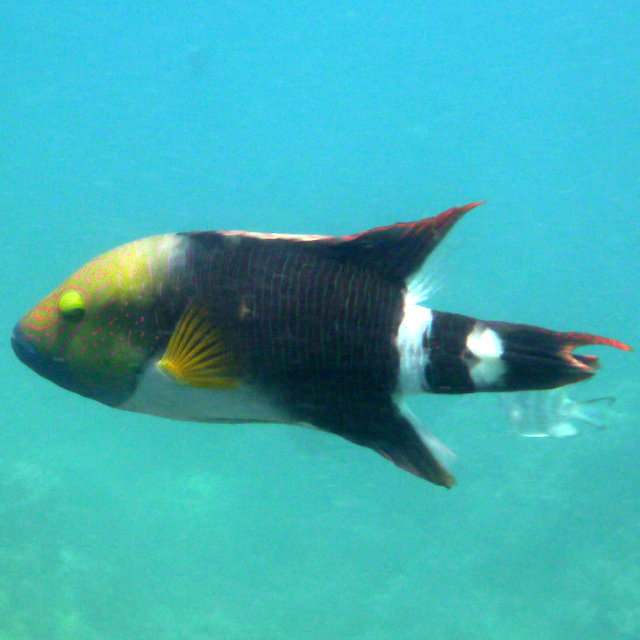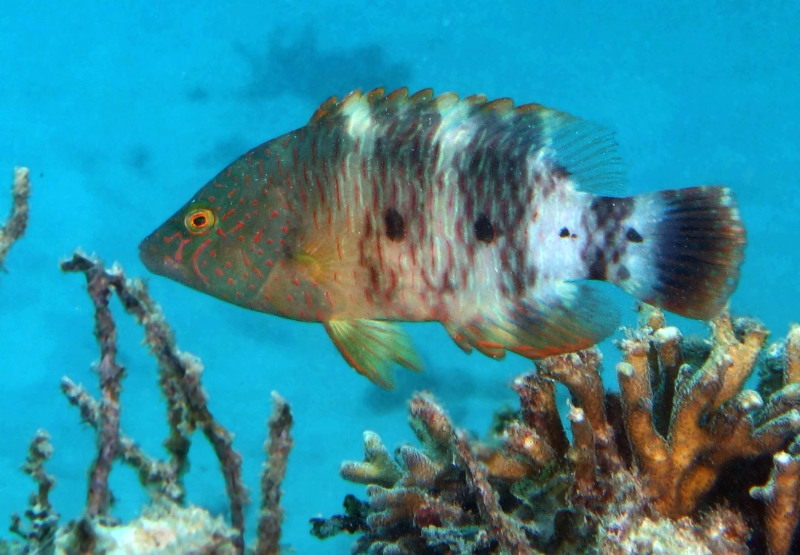�
�
�
���
Cheilinus trilobatus
Tripletail Wrasse
Kingdom
Animalia
Phylum
Chordata
Class
Actinopterygii
Order
Perciformes
Family
Labridae
Genus
Cheilinus
Species
Cheilinus trilobatus
Colours
Distinguishing features
Distinguishing features still need to be specified.
Size
- Up to 45 cm (Total Length)
Depth range
- From 1 m to 30 m
Synonyms
Distribution
Distribution and habitat preferences
Adults inhabit lagoon and seaward reefs. They are relatively common along shallow reef margins with good coral cover. Juveniles are secretive, hiding on algae reefs and usually around stinging hydrozoans (FishBase).
Diet
Feed mainly on shelled benthic invertebrates such as mollusks and crustaceans, but occasionally take fishes. (Fishbase)
Web resources
References
- Bellwood, D.R. and P.C. Wainwright (2001). Locomotion in labrid fishes: implications for habitat use and cross-shelf biogeography on the Great Barrier Reef, Coral Reefs, 20: 139-150. LIRS catalog number 787.
- Eros, C.M. (1996). Acoustic repertoire in the territorial and courtship behaviour of Stegastes apicalis (Pomacentridae), M.Sc. thesis, James Cook University, Townsville. LIRS catalog number 497.
- Green, A.L. (1996). Spatial, temporal and ontogenetic patterns of habitat use by coral reef fishes (Family Labridae), Marine Ecology Progress Series, 133: 1-11. LIRS catalog number 457.
- View all references




